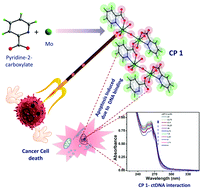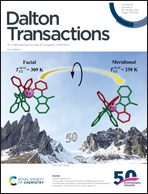A Mo(vi) based coordination polymer as an antiproliferative agent against cancer cells†
Abstract
Metal ions being an important part of biological systems are of great interest in the designing of new drugs. Molybdenum is an essential trace element for humans, animals, and plants and naturally present in many enzymes hence its complexes can be expected to serve as potential candidates for biomedical applications. A novel molybdenum-based coordination polymer, [Mo2(μ2-O)O4(2-pyc)2(H2O)], is synthesized by a hydrothermal route and structurally characterized by using single crystal X-Ray diffraction. The structure consists of molybdenum octahedra connected by a bridging oxo ligand and 2-pyc forming a one-dimensional coordination polymer. This Mo coordination polymer was found to show a considerable inhibitory effect with IC50 values of 22.63 μmol L−1, 28.19 μmol L−1, and 20.97 μmol L−1, against HepG2 (human liver cancer), A549 (human lung cancer), and MCF-7 (human breast cancer) cell lines respectively. This is the first attempt at exploring the molybdenum-based coordination polymer for antitumor applications. The cell cytotoxicity analysis revealed that the anti-tumor potential of the compound is governed by arresting of the A549, HepG2, and MCF-7 cancer cells in the S phase of the cell cycle. UV-Visible absorption spectroscopy further revealed the binding interaction between the Mo coordination polymer and ctDNA and the binding constant was found to be 5.9 × 103 L mol−1, which is in agreement with those of well-known groove binders. This binding interaction in turn induces apoptosis and necrosis pathways leading to the death of the cancer cells.



 Please wait while we load your content...
Please wait while we load your content...